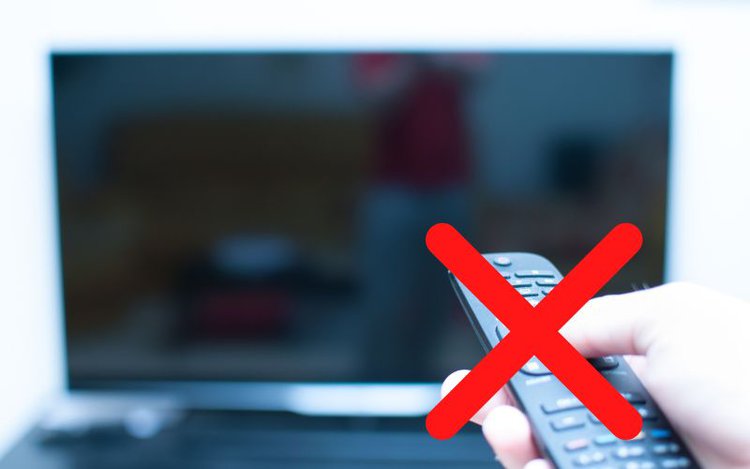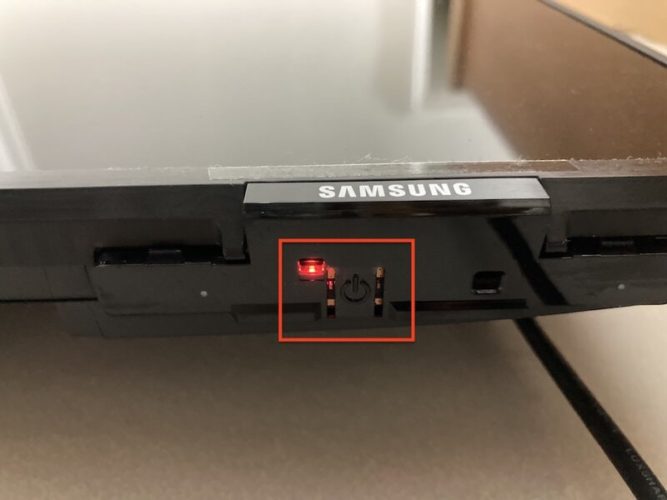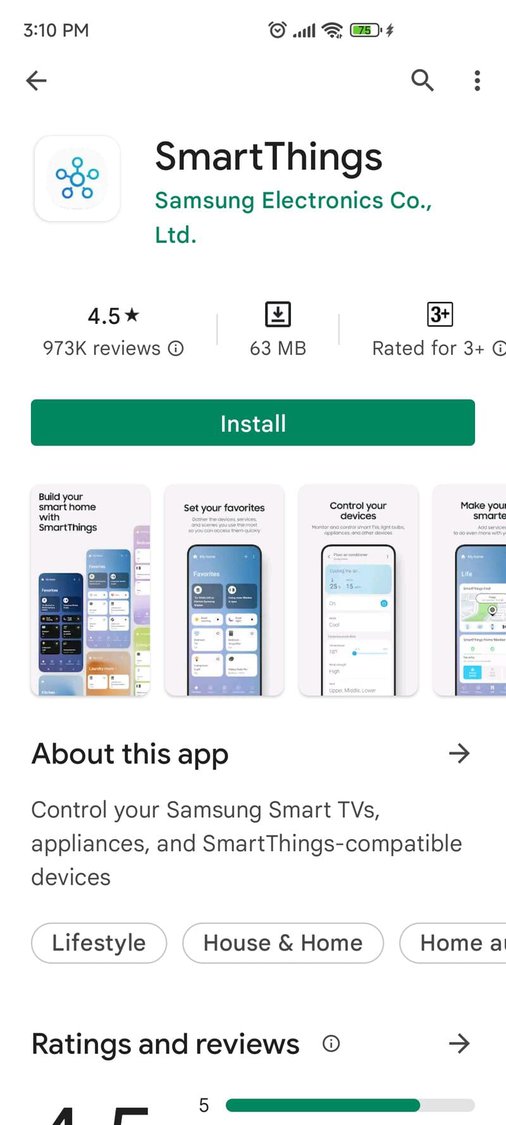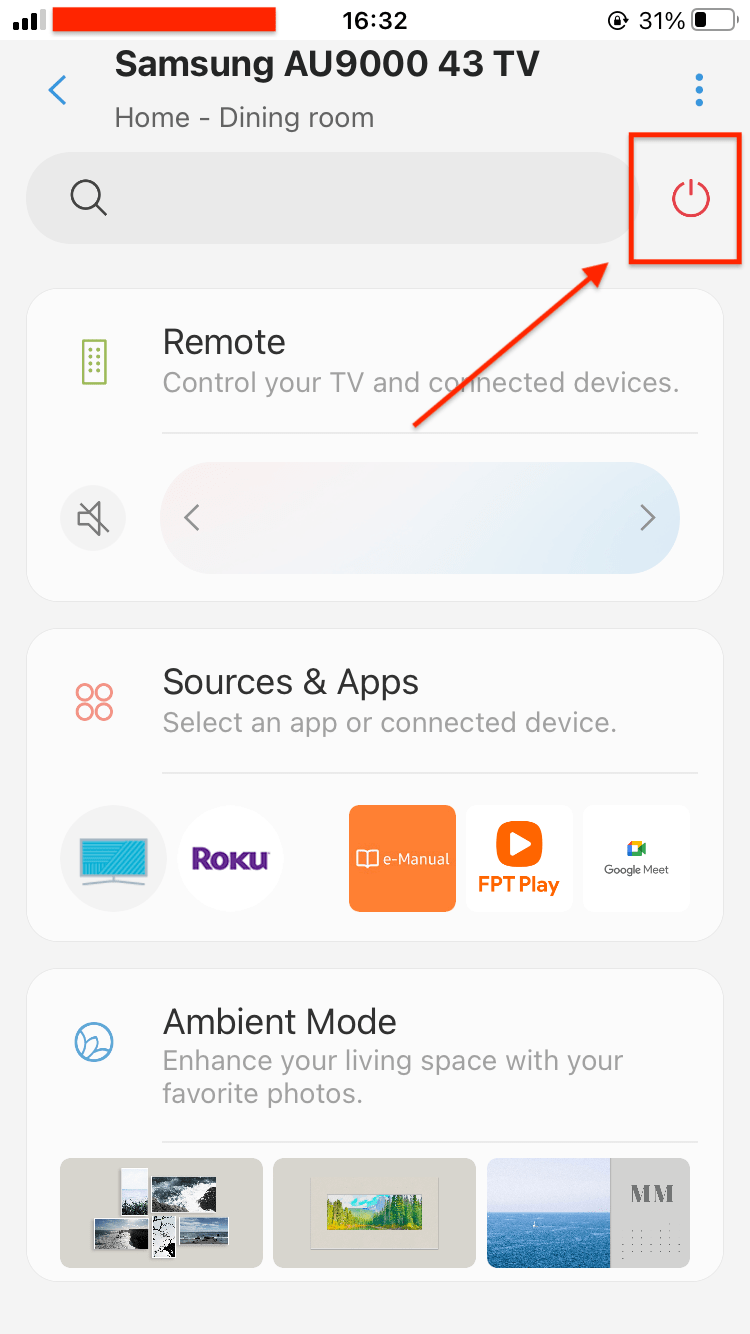How To Turn Off/On a Samsung Smart TV Without a Remote?

- Turn your Samsung TV on without a remote by pressing the control button located on the back or bottom.
- To turn your Samsung TV off without a remote: Press the TV’s control button to navigate the on-screen menu > Holding it down when highlighting the Power off option.
- Use the SmartThings app to turn off your TV and control various functions by pairing your Samsung TV through the app, but remember it can’t power the TV on.
You can turn your TV off and on without a remote. There are two main ways to do this: using the control panel button or the SmartThings app.
These methods will also allow you to control some of your other TV’s functions.
Quick Navigation
1. Using the Control Button
Every Samsung smart TV will have a control button (or power button), which can be used to power the TV on and off. This button is often marked with the universal symbol for power, which looks like a circle with a vertical line going through it (shown below).

This button is commonly found on either the back of your TV or on the bottom bezel (i.e. frame) of your unit. Some Samsung smart TVs have touch-sensitive buttons that must be lightly tapped instead of pressed.
Turning On
Follow the steps below to turn your Samsung smart TV on with its control button.
Step 1: Find your TV’s control button, which may be marked by a red LED light depending on your TV’s model. Remember that it may be on the back of your TV, so check if it’s there if you can’t find it along the bottom or side of your unit.
Step 2: Once you’ve found your TV’s control button, press it once to power on your TV.
Turning Off
Let’s learn how to turn off your Samsung smart TV using the control button.
Step 1: Press or tap your TV’s control button once.
Step 2: You will see a menu appear on-screen. You can also use your TV’s control button to control your TV’s highlight. Press the control button repeatedly until the Power off option is highlighted on-screen.
Step 3: Once you’ve highlighted the Power off option, press and hold the control button until your TV shuts down. This should only take a few seconds.

Watch the video below demonstrating how to power a Samsung smart TV on and off using its control button. Bear in mind that your TV’s control button may look different or be located in a different spot, depending on its model.
2. Using the SmartThings App
Samsung has its very own remote control app, available for use on both smartphones and tablets.
It can be installed from the Google Play Store on Android devices and the App Store on iOS devices.

To use the SmartThings app, your Samsung smart TV and smartphone or tablet must be connected to the same Wi-Fi network since this app works wirelessly via the internet.
You must also be signed into the same Samsung account on both your smart TV and personal device. You will have the option to sign into your Samsung account on the app when you’re setting it up.
Finally, the SmartThings app cannot turn your TV on, so you will have to turn it on manually using the control button (see instructions above).
You can, however, turn your TV off using the app.
You will also be able to control the majority of your TV’s functions from the app, allowing it to (almost) completely replace your TV’s original remote.
Let’s learn how to use the SmartThings app!
Adding the TV to SmartThings App
Before you can use the SmartThings app, you must link it to your TV by following the steps below.
Step 1: After you’ve installed the SmartThings app on your phone or tablet, launch it.
Step 2: You will notice a menu at the bottom of the app. Select the Devices icon from it.
Step 3: Then, find and tap the Add sign (+) icon in the top-right corner of the screen.
Step 4: Tap Add device from the drop-down menu.
Step 5: Select Scan nearby and wait for the SmartThings app to search for available Samsung smart TVs in the area.
Step 6: In a few moments, the app will display a list of available devices. Select your Samsung TV’s name from this list.
If the app does not display your TV’s name, ensure that your TV is turned on, connected to the same Wi-Fi network as your smartphone, and logged into the same Samsung account. Then select Scan nearby again.
Step 7: Once you’ve selected your TV from the list of available devices, a PIN will be displayed on your TV screen. When prompted, enter this PIN into the app and then press the Done button.
Step 8: Wait a couple of moments for your Samsung smart TV and SmartThings app to pair. When they’ve successfully paired, press the Done button on your phone to complete the process.
Congrats! Now you’re ready to use your smartphone/tablet as a remote for your Samsung smart TV.
The process can be a little confusing. If you need extra guidance, watch the video below by Samsung India demonstrating how to pair your SmartThings app to your Samsung TV.
Using the SmartThings Remote Feature
Once you’ve paired your SmartThings app to your Samsung smart TV, you’re ready to start using it to turn your TV off and control other functions, such as highlighting and selecting on-screen options and adjusting the volume.
Remember, you can not turn your TV on using this app.
Step 1: Head to Devices, found at the bottom of the screen in your SmartThings app.
Step 2: Select your TV’s name from the list of paired devices.
Step 3: Your SmartThings remote display should automatically appear on-screen, but if it doesn’t, tap Remote.
Step 4: You should now see a remote interface on-screen, featuring a touchpad that can be used to highlight and select options on your TV. This interface will allow you to navigate your TV just as your would with a regular TV remote.
To turn your TV off, tap the Power button in the top-right corner of the screen (shown below).

Note: You can also use the SmartThings app to mirror your phone’s screen to your TV, change the channel, play your TV’s sound through your phone’s speakers, and control many more functions!
Samsung India has another great video demonstrating how to use the SmartThings app. Watch it below!
Good luck!
Yesenia Achlim is a technical copywriter and editor with a focus on AV equipment. She aims to break down complicated topics and make technology accessible, no matter your technical expertise. When she’s not teaching you how to replace a projector lamp, you can find her reading and baking.

